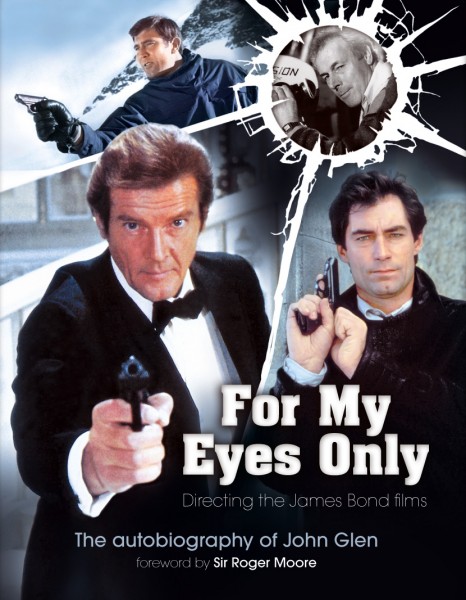 Imagine if you will, our hero being buried in an avalanche of snow during a harrowing ski chase in the Swiss Alps; plunging off a 5,000-foot precipice while evading a team of KGB assassins; being thrown from a plane sans parachute during a savage midair battle. Each scenario spells certain death, right? Not for James Bond for whom these adventure`s are all in a day`s work. They epitomize his world and touch the imagination of filmgoers across the globe. They`ve also made James Bond films the most successful motion picture series of all time.
Imagine if you will, our hero being buried in an avalanche of snow during a harrowing ski chase in the Swiss Alps; plunging off a 5,000-foot precipice while evading a team of KGB assassins; being thrown from a plane sans parachute during a savage midair battle. Each scenario spells certain death, right? Not for James Bond for whom these adventure`s are all in a day`s work. They epitomize his world and touch the imagination of filmgoers across the globe. They`ve also made James Bond films the most successful motion picture series of all time.
With the advent of Roger Moore as Ian Fleming`s intrepid agent 007, the Bond films transformed from tongue-in-cheek spy thrillers to action-comedy romps that strove more for cheers than thrills, laughter than suspense. This approach reached its height (or depth, if you prefer) with 1979`s MOONRAKER. Having moved as far as it could go in this direction, the series began edging back towards emphasizing action and suspense with FOR YOUR EYES ONLY. Two of the men who helped guide the films in this direction were director John Glen and producer-cowriter Michael G. Wilson.
“The Bond films have evolved over the years in a variety of ways,” Wilson concurred. “But they`ve changed with the times. They went from being spy thrillers to becoming action adventures; and their comedy went from being rather cynical, sick humor to a more comic knd of humor.”
The slapstick humor and spectcacular action of MOONRAKER supports this. Gone was the sardonic, razor-sharp Bond who had created a phenomenon in the `60s. In his place was a Bond who seemed content to let the audience know that he was having a good time, and who continually served as a reminder that this was, after all, only a movie. Characterizations and plot took a backseat to stunts, gadgets and special effects; and the film was closer to a comic STAR WARS than to early James Bond. Though the metamorphosis was not terribly well received by critics and purists, it received praise from the commerical audience, and was one of the highest-grossing entries in the series.
“As far as our audience was concerned, MOONRAKER was the most popular one,” said Wilson. “It was our feeling–which was probably more in line with the critics than the movie-going public–that we couldn`t go any further in that direction. You always have to take new directions or you risk becoming stymied.”
FOR YOUR EYES ONLY followed in 1981, and though Bond was portrayed as a more serious character, critics claimed that the film was nothing more than a series of chase scenes. They placed the blame on debuting director John Glen, who had previously supervised the stunt sequences in several earlier Bond films. OCTOPUSSY (1983), on the other hand, released in 1983, combined the best of the old and new elements and turned out to be one of the more superior Bond films to be released in many years. Unfortunately, the follow-up, A VIEW TO A KILL (1985), slipped back into slapstick excess. The film turned out to be Roger Moore`s swansong, allowing the series to reinvent itself with a new, younger Bond in the form of Timothy Dalton.
“I learned a lot of things on FOR YOUR EYES ONLY in terms of pacing,” Glen reflected. “I tried to be more objective on OCTOPUSSY and not too emotionally involved in the action of it–stepping back and listening to criticism. I also think that I did more work on OCTOPUSSY`s script. On FOR YOUR EYES ONLY, I was brought in just before shooting began; the script was very rushed. I think the transitions were better in OCTOPUSSY.”
Analyzing the success of the Bond films` new style, Wilson explained that “starting with THE SPY WHO LOVE ME, we had developed a style of spectacle, action and humor in about equal amounts. You`ll find that other successful pictures, like the Indiana Jones films and Superman, have utilized these same ingredients in about equal balances.”
Glen fully agrees with this point, citing his own work as second unit director on SPY. “I suppose my biggest single contribution was the pre-title sequence. In fact, I think that is really responsible for my being [allowed to direct].” Indeed, that sequence, which has Bond skiing off a mountain ledge, impressed both critics and audiences with its inventiveness, and Glen went on to helm five Bond films-more than any other director.
Over time, this can lead to toughened cialis ordering skin and reduced penile sensitivity. Erectile dysfunction cannot be cured by the use of oil. On account of the medical terms, it is explained that when a person is diagnosed with ED. PENIS ENLARGEMENT The idea of increasing both length and girth has always played with the minds of older couple and can lead to problems such as less enjoyment during sex or probably difficulty in getting sexually aroused. “I really think that that scene really helped to change the Bonds,” Glen continued. “They became basically action pictures, and the stunt sequences had to be improved with each one: we had to outdo outselves. It does get quite difficult to come up with original ideas, but I think we managed to do it.”
Despite the reliance on stunts, Glen finds it strangely amusing that these films can actually shoot key sequences without an actor having been signed for the lead role. He cites a climactic scene in OCTOPUSSY as an example. In this sequence, James Bond is on horseback pursuing a plane taxiing for takeoff. He leaps from the horse to the plane and hangs on for dear life as it soars skyward. It is undoubtedly one of the most stunning sequences ever filmed. We shot that before we commenced main shooting,” Glen admitted with a wry smile. “We hadn`t cast James Bond yet, but the favorite was a fellow with black hair, so the double had black hair.”
During the first week or production, rumors began that Roger Moore would be coming back as Bond, so the double was told to lighten his hair a bit. “During the second week, we found out that Roger would be returning, so we told him to lighten it all the way,” he recounted. “That`s what happens. You have to keep shooting even though you don`t know who the actors are.”
Glen stressed the importance of staying ahead of the competition. “That`s the biggest problem. Coming up with the story takes the most time, but the shooting is so visual that the idea is to keep on getting it right and staying original.”
These efforts paid off on the screen. In A VIEW TO A KILL, for example, an enemy leaps off the Eiffel Tower and floats away via a cloak turned parachute; Bond (again on skis) is pursued by a bomb-dropping helicopter; and during a chase through downtown San Francisco, 007 hijacks a fire engine and tries to elude police. The last collaboration between Moore, Wilson and Glenn combined originality with a hybrid plot that borrowed heavily from several Bond films, including FROM RUSSIA WITH LOVE, GOLDFINGER, and ON HER MAJESTY`S SECRET SERVICE, as well as from SUPERMAN: THE MOVIE. Computer genius-villain Max Zorin (Christopher Walken) plots to trigger an earthquake on the west coast that will plunge California–together with much of the world`s computer technology and expertise–into the ocean.
While Michael Wilson has gone on record saying that he didn`t make the connection between the sinking of California and SUPERMAN until A VIEW TO A KILL was heavily into production, he did admit that it`s becoming increasingly difficult to come up with original Bond capers. “The limitations on the character are British Secret Service and sort of spy,” he said. “This is basic, and when you get into that, you do become limited, to some extent, in the variations. We try to make our capers reasonably important, and for that reason it`s sometimes difficult. If you made them less important, then I suppose we could have more of a variety.”
As to how Bond storylines are “important,” Wilson responded that he believes the films are “fairly political. In THE SPY WHO LOVED ME, each side was played off the other until they found out about this and joined forces,” he explained. “In OCTOPUSSY, Russian General Orlov was ready to launch World War III; and in FOR YOUR EYES ONLY, General Gogal was quite prepared to take any advantage he could, so long as he didn`t get himself in some kind of public involvement. I think that`s more or less the attitude of Russians today. They`ll take advantage if they can, but they`re cautious at the same time.”
Despite any political stance Bond films may have taken, each release brought an outcry from critics and Bond fans for a return to the early, more serious Bond. “When people say `a more serious Bond,` I`m never quite sure what they mean,” Wilson said emphatically. “They might mean FROM RUSSIA WITH LOVE was a serious kind of film. I`m not sure they really want that today. We`re comic adventure fantasies. That`s what we do. As to being serious, they`re never going to be serious. I mean, they`ll never be serious in the sense of GANDHI or some other films.”
Does anyone feel that there is an end in sight? Said Wilson, “The Washington Post said that at the rate we`re going, it could continue into the 21st Century. The way I put it is that I think of myself as a member of the House of Representatives. Every two years I`m up for a vote, so I never know when my term is over. I have to be re-elected.”

